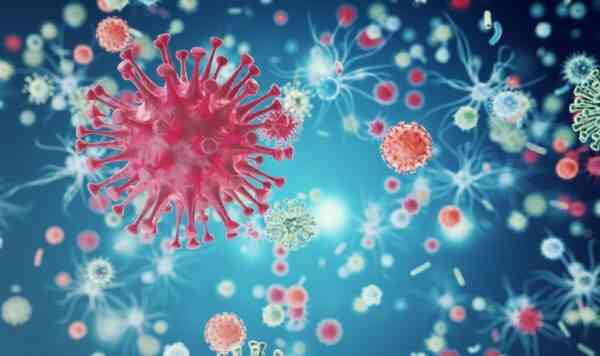Virgins often appear in books and movies as some kind of evil hive mind. In fact, this, of course, is not at all the case, but the fact remains that these organisms are incredibly well adapted to survive in any conditions. They rapidly mutate and change in order to survive, but not all of them are dangerous or even harmful. However, it is viral diseases that often become one of the most dangerous, since in the organisms of various carriers these microorganisms are able to adapt, and they sometimes successfully resist attempts to destroy them.
Interesting facts about viruses
- Viruses are not living beings. Dead, however, too. That’s some interesting biology.
- Viruses don’t have cells, they don’t know how to convert food into energy, and without a host they are just clumps of chemicals.
- Plant viruses are harmless to animals, while most animal viruses are harmless to humans.
- According to one hypothesis, cellular life on Earth originated after a virus took root in bacteria, forming a cell nucleus.
- It is believed that approximately 40% of human DNA consists of the remnants of ancient viruses that, at various stages, infected the cells of our ancestors.
- In 1992, scientists traced the source of a pneumonia outbreak in England to a virus hiding inside an amoeba living in a cooling tower. It was so large that at first scientists mistook it for a bacterium.
- Some types of cancer are associated with cancer viruses.
- A fully formed virus is called a virion.
- Viruses of large size are called mamaviruses. Their dimensions often exceed the size of even some bacteria. Such viruses have satellite viruses. Doesn’t sound like cosmology, does it?
- Viruses that infect harmful bacteria can even help a person by entering into symbiosis with him.
- Viruses are able to help their fellows. Recently, researchers have shown that the vaccinia virus, when it enters a cell, leaves special proteins on its surface. They force the cell to synthesize special protein tails. Other viruses, encountering these “tails”, do not penetrate into an already occupied cell, but go in search of those that have not yet been infected. Thanks to this, the vaccinia virus spreads 4 times faster.
- Some scientists believe that once, at the dawn of life, viruses and all living things on Earth had a common ancestor.
- In Australia in the 19th century, the rabbit population increased dramatically. This led to the fact that many plants in this vast area were destroyed. For decades, people and scientists have been fighting rabbits, but this has not brought any success. In the middle of the 20th century, the rabbit population was brought under control thanks to a virus called myxomatosis, which led to their decline (interesting facts about rabbits).
- To date, more than 2000 variants of the influenza virus are known, which differ in their antigenic spectrum.
- There are two types of viruses: DNA-containing and RNA-containing.
- Viruses are the most numerous biological objects on Earth, and in this indicator they surpass all living organisms combined.
- Amoeba for viruses are a kind of sandbox and soup kitchen – they absorb large objects within their reach and are a source of nutrients for bacteria, which inside the amoeba exchange genes with other bacteria and viruses.
- Despite the fact that viruses no matter how alive, they reproduce, and they have genes and natural selection.
- In Latin, the word «virus» means «poison».
- Viruses were not seen for the first time until the advent of electron microscopes in the mid-20th century.
- Viruses can infect animals, plants, fungi, single-celled organisms and bacteria. Mamaviruses, together with their satellite, also infect other viruses.
- Many of the formations in our cells are at first glance useless, which is also explained by the fact that these are viruses that have successfully taken root inside us at different stages of evolution.
- Microbiologists divide viruses into four types according to their shape, but this division is purely external – it allows us to classify viruses as spiral, oblong, etc.
- Most of the ancient viruses introduced into our genome do not exist in nature today. In 2005, French scientists began work on the “resurrection” of one of these viruses. One of the viruses resurrected in this way, codenamed Phoenix, was not viable. Apparently, not everything is so simple.
- Retroviruses have the unique ability to insert genes into human chromosomes. These special viruses have been used as important tools for scientific discovery. Scientists have developed many methods using retroviruses, including cloning, sequencing, and some gene therapy approaches.
- Braconid wasps instead of poison inject their victims with a virus that suppresses the victim’s immune system. Suppressed immunity allows the parasitic larvae to develop inside the prey. Biologists have found that this virus is more than a hundred million years old, and, most likely, it merged with the DNA of a wasp.
- The sizes of viruses range from 20 to 500 nanometers.
